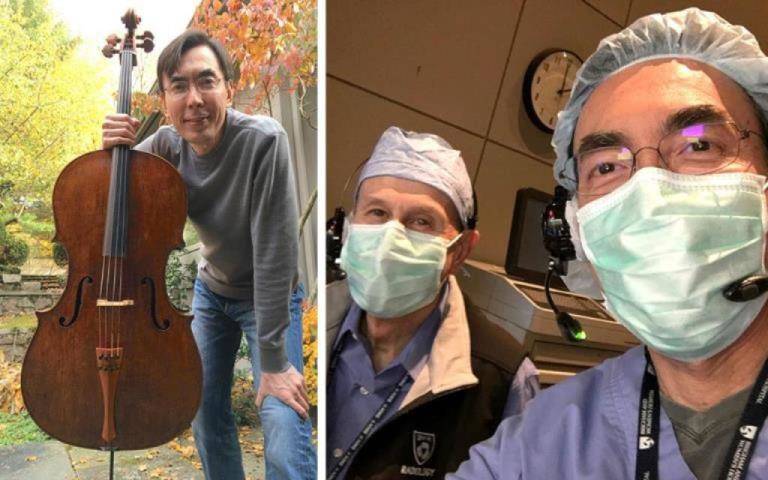Paul B. Shyn, MD, associate radiologist at Brigham and Women’s Hospital and associate professor of radiology at Harvard Medical School, believes in the power of music and its calming and therapeutic effects. Shyn plays the cello, and he enjoys sharing his gift with colleagues, patients, and medical providers. “It’s something I enjoy and is comforting,” he says, “I thought it would be a nice diversion from the current challenges we’re facing.”
Shyn gained national acclaim on Twitter with his rendition on cello of Camille Saint-Saëns’ The Swan — which then led to coverage on NBC Nightly News in a segment on healthcare workers using music to uplift patients during the pandemic. In a recent interview with the ACR, Shyn discussed what keeps him up at night, COVID-19, and his hopes for the future of radiology and for residents about to embark on lifelong careers.
How has COVID-19 impacted you and your organization?
For Partners Healthcare — now called Mass General Brigham — it has been transformative. Huge changes happened rapidly to address the crunch and surge in infections. We stopped doing tumor ablations altogether for the entire month of April. Now that things are starting to ramp up again, we have quite a bit of catching up to do. The longer-term impact will be the rapid expansion of virtual practices. When this crisis occurred, all of our clinics became virtual almost overnight. Many patients and staff think this will last, and they like it. There’s a convenience in not having to make a trip into the hospital or practice. Everyone is looking at making their organizations more nimble and flexible — and less rigid than before.
What were some of the challenges you and your organization faced in going virtual?
Some of our elderly patients are not comfortable using a computer. For them, we do telephone clinic visits. Everybody still acknowledges, though, that having in-person consultations and being able to meet face-to-face has value. In our practice, physical exams are typically not critical, but occasionally they are. Operating virtually may not replace in-person appointments but it will reduce the volume in our clinics. Boston is a little different from most communities because finding clinic space is difficult. Most medical staff here believe that freeing up clinic space would actually be helpful.
What challenges lie ahead for radiology post-pandemic?
The economic impact was fast and severe. The good news is that there is every reason to expect that things will get back on track again soon — with healthcare in general, and with radiology. That said, operational adjustments will have to be made continuously to adapt to this new environment since COVID-19 is not going away any time soon.
One of the biggest challenges is operationalizing safe practices for staff and patients. We are looking closely at every aspect of our practice, including protocols and scheduling. As an academic center, there’s a tendency to obtain every type of scan and sequence you can think of, which is great for academia, but isn’t practical. This crisis is prompting a re-examination of even academic settings, which I believe will lead to more streamlined protocols and efficiencies.
How important is it to stay in touch with colleagues?
We learn so much from each other. One of the amazing things has been how rapidly information has been gathered and shared. It’s happening within and between institutions, and among cities and countries. The ability to rapidly respond to changing situations highlights the importance of organization, structure, and communication. The ACR has certainly been doing its share to get COVID-19 information to members rapidly — like guidance on chest CT scans and how to bring your practice out of this crisis (learn more at acr.org/COVID19).
What advice do you have for residents, given the uncertainty of what lies ahead?
I don’t think there’s a reason to panic or be afraid. These are challenging times, but radiology will continue to be a critical need going forward. I went into radiology because of the diagnostic, problem-solving, technology, and imaging aspects of the field. It’s going to continue to be an exciting career. I know there are some short-term challenges. For instance, one of my fellows thought he had a job lined up and recently found out that the job is now on hold. But that’s only short-term. The prospects for the profession are great long-term. I think there is every reason to be optimistic and have a positive outlook going ahead. Radiology is here to stay.
The good news is that there is every reason to expect that things will get back on track again soon — with healthcare in general, and with radiology.

